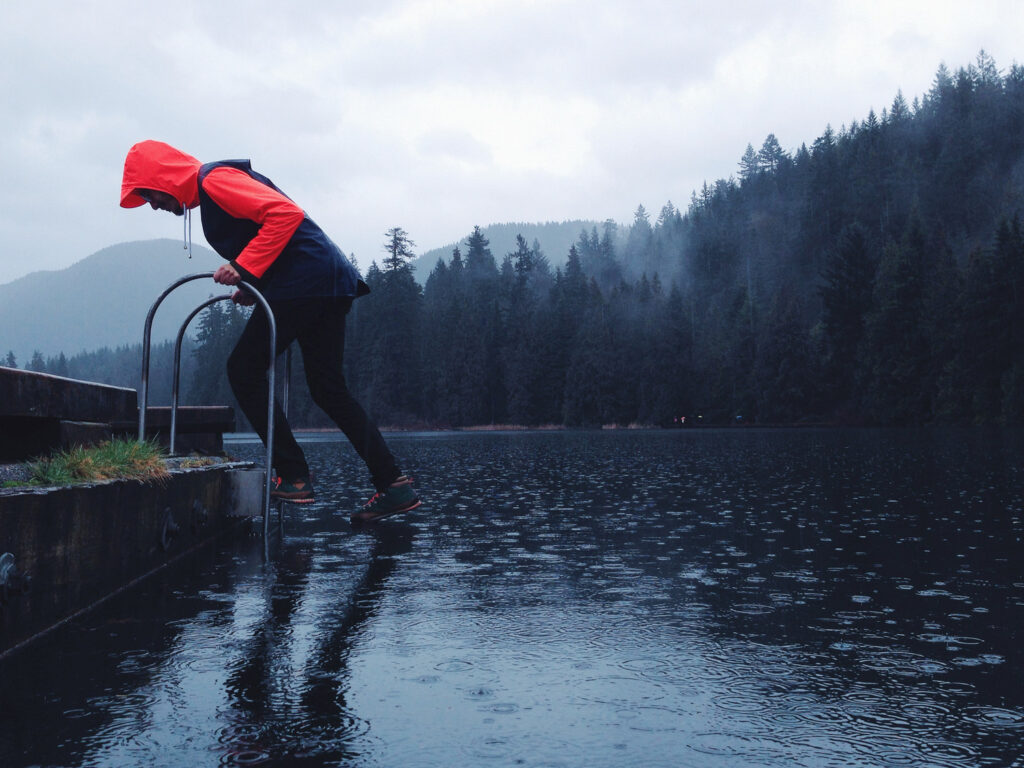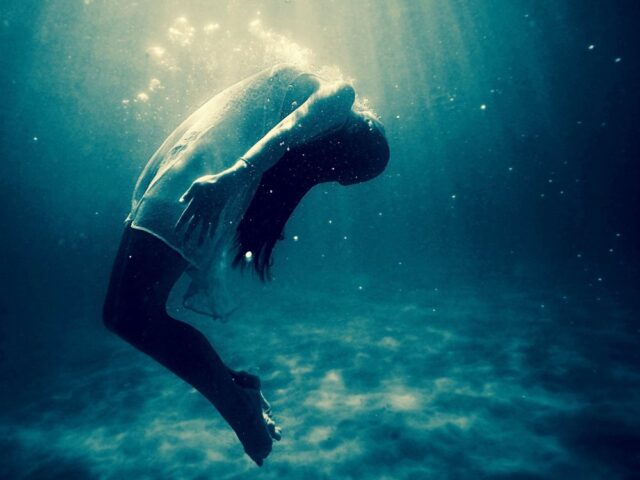Drowning is a scary subject for most people, and trying to master a fear of drowning is often more difficult than you think, especially when you consider that there are countless situations in which you may find yourself in danger. But what if you could actually train yourself to overcome the fear of drowning, so that it becomes a much less significant part of your life?
This fear of being submerged in water has undoubtedly been with us since the dawn of time. The notion that we could drown in the sea, the bathtub, or even a swimming pool was enough to keep most of us out of the water. But, what goes on inside the mind of someone who really fears the ocean?
In recent years, we’ve seen a lot of coverage of how people can escape from crocodiles in the wild. It’s a shocking, truly unbelievable series of events that we like to believe just doesn’t happen. But now, it’s time to talk about how some people can get away with it; how it can be done.. Read more about what is fear of drowning called and let us know what you think.
My mother requested a friend to keep an eye on me while she went to the bathroom at our neighborhood pool when I was three and a half years old. I immediately dove into the deep end and almost drowned.
Given my age at the time, I only recall a foggy memory of fear and being swamped by water, followed by the gaze of the on-duty lifeguard. I don’t recall his appearance, but I do recall his name being Bram.
Given the circumstances, my mother did the smart thing and enrolled me in swimming classes right away. I learned how to swim breaststroke and butterfly, and even though I kept hitting the lane barriers during backstroke, I was able to remain afloat on my own. My family exhaled a sigh of relief; although I wasn’t an Olympic athlete, I could swim.
Fear instilled at an early age tends to stick with you, and in my case, it made me terrified of drowning. Water-related disasters, by extension. I pushed myself to go on boat excursions every now and again, including a rough last-minute Galapagos trip in 2008 and, more recently, a lengthy repositioning sail from Vancouver to Tokyo. The repositioning voyage was a fifteen-day adventure aboard a large ship with nine other companions. It was full of friends, business masterminds, and delicious cuisine, as the title implies. But I spent the most of our time in the Bering Sea on the floor of my room, waiting for the boat to sink and the sharks to devour us.
In hindsight, this seems funny, but I was exhausted and breathless throughout our Bering passage, tired of the constriction in my chest and the endless loops of “what ifs” in my head.
Is it human to be frightened, from fear to phobia?

Fear is an odd and bizarre thing, particularly when your system learns to sketch its outlines with graceless familiarity.
Tom Jacobs discusses the neuroscience of fear in a 2012 article for Pacific Standard magazine, noting that, like fire, it is our friend when it isn’t roaring out of control. That is, being aware of a danger triggers the fight or flight response, which we need to react in, frequently in ways that save our lives.
When most individuals understand there is no genuine danger, their bodies relax and their pulse lowers. For individuals with more severe phobias, the response may last for a long time, creating anxiety problems. René Garcia writes in a 2017 study on the neuroscience of fear that
“[s]pecific phobias are irrational dread about certain items, circumstances, activities, or people. Furthermore, even though they know there is no threat or danger, individuals with particular phobias strive hard to avoid their phobia triggers because they feel helpless to stop their illogical fear.”
An experienced fear develops into a phobia in two phases, according to Garcia. First, when a neutral stimulus (in my instance, water, which isn’t really frightening) is combined with an unpleasant experience (nearly drowning), a conditioned fear response is elicited. Then, by learning that avoiding the now-conditioned-to-be-scary stimuli may decrease fear responses, this stimulus can be avoided.
Fear in the contemporary world was recently addressed on NPR’s Invisibilia program, and how we frequently design our lives in ways that send our instincts into overdrive. They also featured a lady who has no fear at all, which may seem like a relief to some but really exposes you to life-threatening risks since you are unaware that you need to avoid them.
Of sure, we should be afraid of frightening things. Fear is our evolutionary salvation. However, when fear spirals out of control – whether as a phobia or as a central nervous system on a hair trigger – it may have disastrous consequences for our health.
Indeed, a research on anxiety and the “defense cascade” cautions that, although animals can usually return to “normal” once a threat has gone, people are not always so lucky. As a result, “they may get stuck in the same, recurrent pattern of reaction linked to the initial threat or trauma.” That traumatic arousal programmed reaction is not good for our bodies.
Boats at a standstill. Panic is available individually.
My fear of drowning was not a disease or a concern that interfered with my daily activities. However, as the years passed, it grew into something more unwieldy than mere dread. It ceased to be just about drowning. When the boat remained quiet at night, I began to get concerned about anchors coming undone. Concerning sharks. Falling off the boat’s side. What should I do to prepare for the impending disaster?
It didn’t help that I knew it was okay to be frightened of stormy waters. Why? Because that dread has spilled over into so many other areas of my life. As I saw the dread expand and develop, interfering with parts of my life that I wanted to enjoy, I got more irritated.
I made reasons for not being able to participate in water-based activities when friends offered them. I seldom went near gorgeous islands when I traveled to nations having them. Yes, I liked the mountains (and the scent of pine trees), but I was also frightened of what could happen if I got too near to the water. When I thought of being forced to swim, my breath quickened and my pulse started to beat faster, and I became a sweaty mess.
I understood mathematically that the chances of my worries coming true were astronomically small. Panic, on the other hand, is unconcerned with logical reasoning. I felt embarrassed by my dislike to activities that appeared to appeal to so many of my peers. Instead of fear, I urgently hoped I might find freedom in the water.
And it all came to a head in New Zealand, a water-rich nation. A water-loving Kiwi called Doug invited me to join him on a multi-day learn to sail course the night before it was scheduled to begin. I consented to this last-minute form of exposure treatment since I barely had half an hour to make a choice.
My friends thought I was insane, but I believed the classes would educate me to be less afraid of water.
I was sick all night and couldn’t sleep.
Taking a sailing school in New Zealand to overcome my fear of drowning: clever or stupid?

At 2 a.m., the howling began in earnest, with our 25-foot yacht swaying back and forth and the wind roaring in my terrified ears from the peninsula. We selected a protected mooring for North and Easterly breezes that was suggested, however the winds changed throughout the night. The fresh winds tossed us around a lot.
It was our third day of the training and our first night on our own. This sailing school consisted of two days of teaching and then a quick ejection from the nest in the shape of solo days of adventure, which was probably a good thing. I would have left if I had known what it meant when I joined up.
On this training, I really wanted to be bold. Part of me understood that expecting years of deeply hidden dread to break free and float away the moment I learned how to sail was setting myself up for failure. “I’ll simply be like all the other regular people when I go on that boat,” I rationalized, “because the training will show me how sails operate and then I can just utilize them.”
This, of course, was not the case at all.
I spent the first day of the trip white-faced and clutching to the boat’s railings, seasick and unhappy. My thoughts kept teasing me as I tried to pay attention to Johnny, my attentive teacher. “You’re not going to make it,” says the narrator. You were so naive to believe you’d be alright. You’re not in good shape. Without toppling down, you can’t even gaze up at the sails.”
As Johnny described the physics of sailing, I tried to remain calm.
I didn’t sleep at all that first night — again again. While Doug slept, I walked from window to window, attempting to slow my breathing and just experience the dread and feelings and accept them. I reminded myself again and over, “Release the fear, Jodi.”
But I was unable to do so.
I wore a lot of layers to bed. I was freezing, but as the fear pervaded my body, I took off my fleece and down vest and sat in a t-shirt and sweatpants, leaping at every new sound the boat made.
I was tired and dejected by daybreak on the second day. Fighting seasickness and fear took its toll quickly. After one glance at me in the morning, Darren, the owner of our sailing school, recommended I go to Paihia and pick up the Paihia Bomb, a concoction of drugs from the pharmacy that prevents even the most severe seasickness.
While I never received a complete explanation of what was in the medication, following the directions — taking a blue tablet and then a white pill half an hour later – worked.
I did this every morning after that and never got seasick again.
The Paihia Bomb – take a blue tablet, wait 30 minutes, then take a white pill and go on the water. Magic.
As the second day progressed, all I could think about was the fact that we would be on our own that night.
Doug was comfortable on the water as a child, but he had never taken sailing lessons. He wasn’t ill, and he wasn’t scared. He had previously sailed through the Cook Straight with companions in much harsher circumstances than we were experiencing in the Bay of Islands.
Despite the fact that I was a shambles, the instructors were satisfied enough with this – and his performance throughout the two days of training – to entrust us with the boat.
Darren kneeled alongside me to give me a much-needed pep talk as we were ready to go out alone on day three, the boat stocked with non-perishable food and snacks.
“Don’t worry, you’ll be OK. I’ve been doing this for years, and on these solitary days, nothing has ever gone terribly wrong. You’ve got beautiful weather heading your way, a companion who understands how to live on the sea, and all you need now is some time to overcome your anxieties. Do your best and try not to be too hard on yourself for being afraid.”
This was, without a doubt, my most serious issue. I braided pure white rage into the physical embodiment of my anxiety, mostly because of my incapacity to relax and learn what I could. I sobbed every time the boat heeled. When other sailboats approached us, I was unable to judge distance and was convinced that we would collide with them.
Of course, we didn’t. We didn’t tumble off the boat, lose our anchor, or forget to connect the halyard at night, only to discover we couldn’t raise the main sail when we awoke. None of this happened, but the fact that it didn’t didn’t make me feel any better.
I went to bed with my stomach twisted, expecting to be awakened by the strange noises of a boat resting. The sound of the rudder crashing into its case was first, followed by the creaking of the boat as it turned on its anchor, and then the howling wind as it blew through the ridge of trees that encircled our nocturnal harbor. I slept for a few restless hours before waking up and remembering where I was, instantly filled with dread for the day ahead.
I had driven myself so deep into a panic cycle that I had given up attempting to control it. I needed to assist with the boatwork for the next day, but I’d have to do it in the midst of my self-defeat. So, with tears streaming down my cheeks, I got up and raised the sails, adjusting for wind and ignoring the screaming voice in my mind.
A magnificent vista at Russell, the Pacific’s “hellhole,” as Darwin dubbed it. Nowadays, it seems to be beautiful!
On our final day, we emerged from the safety of Opunga Cove to rough seas, with waves smashing against the side of the boat and rain falling steadily. In an effort to remain upright, I fought my way up to the bow of the boat to repair the jib, clutching the boom of the mainsail upon my return. We opted to utilize just the jib for the last part of the trip, instead turning on the engine and keeping it on a low throttle to assist us get back to Opua.
The veil of rain and wind that obscured our vision as we neared Tapeka Point made visibility very difficult. The waves were also so high that they swamped our dinghy, filling it with water. And that its oars were vanished. A pair of dolphins came up to the left of our sailboat, playfully following us as we bobbed awkwardly toward Tapeka Point, when the wind was howling and the boat was being tossed around in high waves.
I grinned as I swung my head back at Doug, my eyes full with amazement. It was the first time since we left Opua two days before that I felt relieved.
Other beautiful moments nestled themselves into the nooks and crannies of my anxiety, but the dolphins represented both a symbolic and physical turning point.
As the sun rose over the lake, I was making my morning coffee and gazing into the mist. Waving to all the other boat owners and rowing over to tell them it was our first time ‘out in the wild,’ and could they please let us know if we had moored too close? Trying not to tumble off the boat while reading the geography of the charts aboard. At twilight, watching driving fleets of ducks zoom past. As we hit wave after wave, I shake my head at the seagulls who have hitched a ride on our dinghy and are cawing into the air.
Cooking chicken laksa with mien noodles, a comfort meal that transported me back to Asia despite the fact that I was totally out of my element.
Cooking on a boat is the way to go.
And then there are the sunsets. The breathtaking sunsets in New Zealand.
Water-based light display.
“If we consider our worries to be more than simply fears, we should consider ourselves to be the writers of those tales. But, more significantly, we must see ourselves as fear readers, and how we choose to interpret our fears may have a significant impact on our lives.”
TED lecture by Karen Thompson on what fear may teach us.
Overall, we arrived at Opua in one piece.
Doug deserves a huge thank you for not only being cool in the face of my relentless fear, but also for attempting to calm me down with words while trying to navigate a boat. With the benefit of hindsight, I know that I had unrealistic expectations for this course. I wanted to be courageous, not weep, and emerge as a more functioning, water-loving person from the cocoon of fear.
Instead, as I pushed through the three solitary days, desperately attempting to put some of the anxiety at away, I shed tears and a frightening quantity of hair.
Despite all of the suffering, the end outcome is good.
I understand that fear is often a result of a conditioned imagination that is allowed to run wild, with the most vivid and catastrophic fears obliterating the others. There are many analogies here regarding real control vs illusion, as well as life itself not being something we can always anticipate or command.
When people question me about solitary female travel, I usually tell them that I can only travel in the body that God has given me. Despite my stature and the fact that many people warn me it is hazardous, I decided to live an unorthodox life. Why is this a better option than travelling on a boat? Finally, this sailing course demonstrated to me that the only way to restore some sort of balance is to push through my anxieties.
I’ve learnt this in other areas of my life, but because of the visceral nature of this fear, I had to abandon my normal approaches to conquer it.
And I’m not the only one.

According to a research on exposure treatment, extinction, or the elimination of phobias, is neither the result of the fear being unlearned or the phobia being completely “conquered.” Instead, it’s due to the emergence of new brain pathways that compete with the acquired fear for dominance. And avoiding that anxiety too much may hinder us from rewiring our brains in such a way that it is adequately overwritten.
“Strong avoidance promotes resistance to extinction of classical fear conditioning,” René Garcia warns in his article. That is, if we ignore a profound fear, it is simpler for it to become pathological. Years of avoiding water-based sports and sailing excursions only served to exacerbate my fear of drowning.
I doubt I’ll ever be a carefree soul on water, but by pushing beyond the boundaries of what I considered reasonable, I was able to take part of my fear’s power. People have asked me whether I’d do it again. Yes, I would definitely go back aboard a sailboat. However, I am aware that I will most likely cry a lot while doing so.
Perhaps my anxiety will subside with time, but at the at least, I now know that I’ve taken a tiny step toward being the person I want to be, one who doesn’t shy away from the tough even when her stomach is knotted and the wind is blowing in her face.
-Jodi
References:
Fear and Defensiveness Clinical Implications and Management of the Cascade
Pascal Carrive, Kasia Kozlowska, Peter Walker, Loyola McLean
263–287 in Harv Rev Psychiatry, July 2015. doi: 10.1097/MD.0000000000000000000000000000000000000000000000000000000000000000000000000000
Fear neurobiology and particular phobias
10.1101/lm.044115.116 René Garcia, Learn. Mem. 2017. 24: 462-471
More information about trauma and the fear response may be found at:
Many of us will experience some form of anxiety or fear when we are faced with an immediate problem that could cause us to drown. For instance, imagine that you are in a beautiful beach and you see a wave coming towards you. You have no time to think about or prepare for what you will do if the wave hits you. You must not think and react, but just react. The way to conquer this fear is to face it head on: by realizing that you do have time to prepare, and that there is a small chance—but not a certainty—that you will drown.. Read more about how to overcome fear of swimming in deep water and let us know what you think.
Frequently Asked Questions
Why am I so afraid of drowning?
This is a common fear that many people have. It is often due to the fear of losing control and drowning.
How do I face my fear of head?
To face your fear of head, you should try to relax and focus on the music.
Why cant I put my head under water?
You cannot put your head under water in Beat Saber because the game is designed to be played with a headset.




